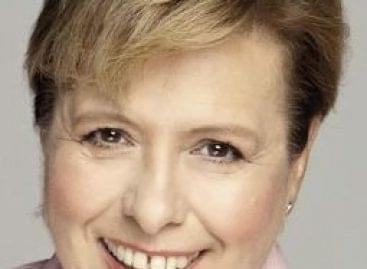End of summer: inflation above 34% and the worst is probably yet to come…
It was on Tuesday that Andreas Christou, managing director of RetailZoom gave a presentation at the Business Days conference. His topic was the latest trends for Hungarian retail chains and national tobacco shops.


Guest writer:
Andreas Christou
managing director
RetailZoom
He told that in the main FMCG categories prices elevated by more than 34% since January 2022. However, the average inflation measured in shoppers’ baskets was “only” 22.1% – but let’s not forget that this index doesn’t calculate with important factors such as promotions, packaging size changes, innovations, etc.
RetailZoom receives data on daily transactions from more than 4,000 stores, which makes it possible to analyse price trends at SKU level. What we can see is that the average price increase was 34.2% for the nearly 19,900 SKUs. In the pre-Covid period prices increased by 0.6% per month in Hungary, but from this January this rate got six times bigger.
PL products gather momentum
The compositions of shopping baskets have changed significantly. In the past few years price-sensitive and premium products could grow in almost every category. Taking a look at the last few months, we can see that 60% of baskets contained minimum one product on which there is a price cap, and half of these baskets had 50% price capped products in them. Shoppers are also downtrading from premium and mainstream brands to promotional or private label (PL) products. PL products are pushing forward: in the first six months of 2022, PL product volume sales were up 36% in Hungarian-owned retail chains, while PL value sales jumped 51%.
Fewer big baskets, more medium ones
Shopping habits have changed in other ways too. Back in 2021 about 10% of customers in Hungarian retail chains spent HUF 10,000 per shopping occasion. Today only 6.4% of shopping baskets fall into this category. There are more HUF 2,500-5,000 baskets than before; these typically have 8-12 SKUs in them, mainly staples such as rice, pasta, oil, etc. The proportion of these medium-sized baskets jumped from 33% in 2021 to 47% in 2022. Hungarian retail chains were able to increase sales by 11.6% this year, but unfortunately this time the engine of this double-digit growth was inflation. While the sum spent per shopping occasion dropped, the frequency of store visits increased.
Loyalty pays off – even more than before
What means do retailers have to cope with the situation? Loyalty programmes are more important now than ever before: together with personalised messages and tailor-made offers, shopper loyalty can be increased and the basket size can be maximised. Never forget that a “loyal customer” spends four (!) times more than the average basket value in Hungarian retail chains. Plus loyal shoppers keep putting more products into their baskets year after year (+13%), and their basket values are growing above the average. Another field where Hungarian retail chains need to make progress is product portfolio optimisation. Discounters have been pioneering this for years, and their more than one third market share in FMCG retail makes it clear that they know what they are doing. //
Tobacco shops: the 10th FMCG retail chain
National Tobacco Shops came into existence in Hungary in 2013: there are about 4,900 of them at the moment, and 3,600 realise 95% of their total sales. In the last two years the share of FMCG products in total tobacco shop sales has been rising sharply, and presently they carve out 15%, which represents a value of HUF 156bn. This performance makes tobacco shops the 10th biggest retail chain in Hungary, ahead of dm and Rossmann. In the last 12 months FMCG sales grew by 24.3% in tobacco shops.
Alcoholic drinks in the leading role
It is remarkable that approximately 20 FMCG categories were able to acquire a 15% share in the total sales of tobacco shops. For instance annual beer sales exceed HUF 25bn in tobacco shops, making these units the strongest retail channel for the category. This also means that there is huge growth potential for suppliers in this segment. Various alcoholic drinks have a 51% share in the FMCG sales of tobacco shops, with spirits at 27% and beer ranking second. In Hungary tobacco shops constitute the highest-turnover alcoholic drink sales channel.
Four from ten purchases are “smoke-free”
Another interesting piece of information is that in tobacco shops 41% of baskets don’t contain tobacco products at all, only classic FMCG products. Alcohol-free drinks also do well in this channel, e.g. energy drinks have a share above 14% (up 2% from 2021) from total FMCG sales in this channel, while soft drinks are above 12%. Perhaps a little surprisingly coffee comes next in the ranking, but not as a packaged product but freshly brewed and sold from vending machines. All in all, we can say that from a manufacturer’s perspective, tobacco shops are a new and very important element of the retail sector, where it is critical for brands to be positioned well. The RetailZoom team is ready to help in this. //
This article is available for reading in Trade magazin 2022/11
Related news
Supplier and buyer goals align, but challenges and plans vary by channel – We were learning together (Business Days 2024 Part 1)
From Tuesday the students of the FMCG Open University had…
Read more >Premium FMCG products starting to sell in tobacco shops
This article is available for reading in Trade magazin 2024/11…
Read more >Selective shopping is the new way to control disposable income
Andreas Christou was one of the presenters at Trade magazin’s…
Read more >Related news
On self-acceptance, self-liberation and the gift of everyday life – We were learning together (Business Days 2024 Part 2)
On Friday at the Business Days conference it was all…
Read more >Brand footprint – or what do Coca-Cola, Kinder and Riska have in common?
The results of the Brand Footprint research coordinated by CPS-YouGov…
Read more >







